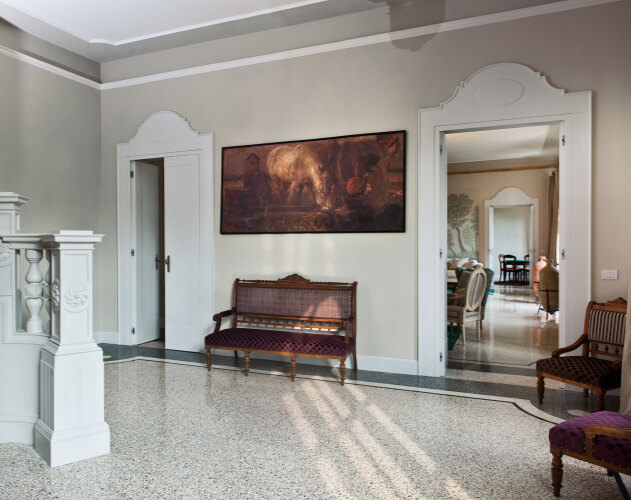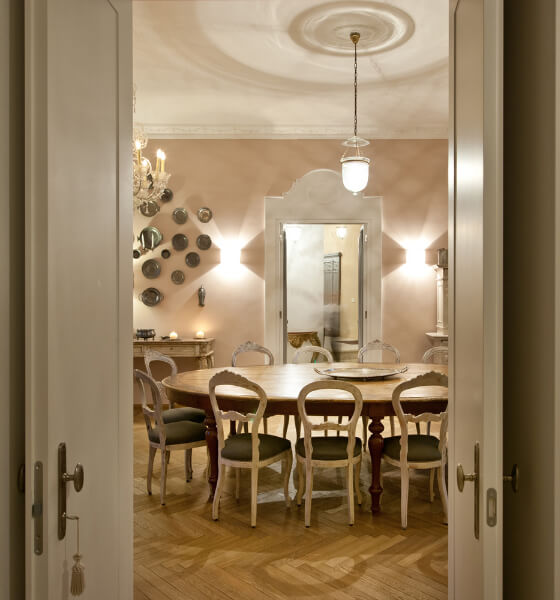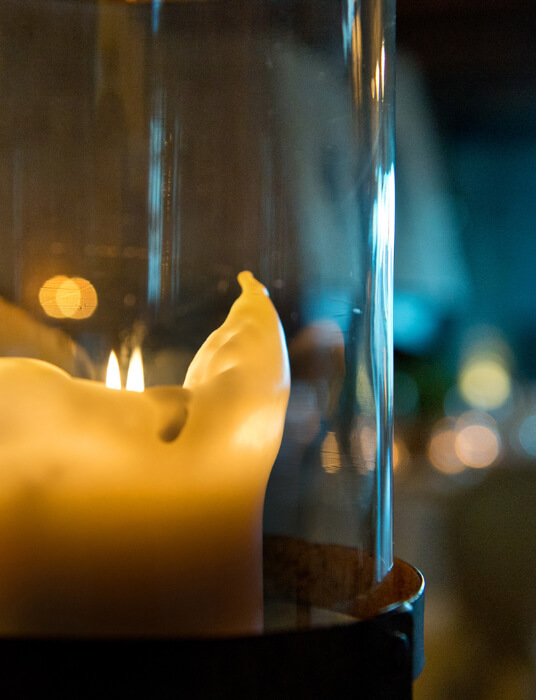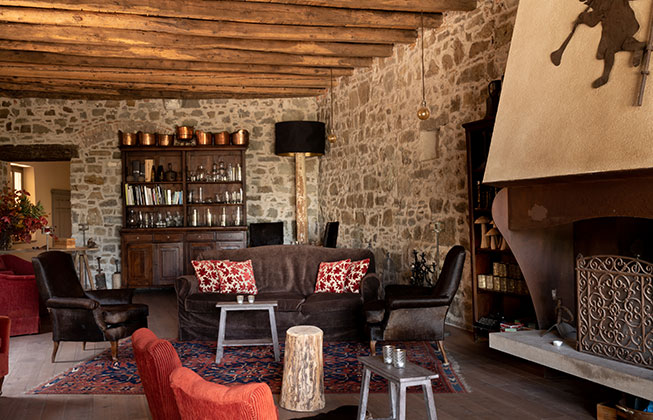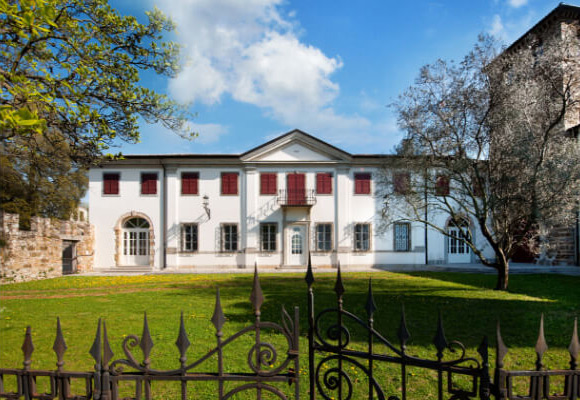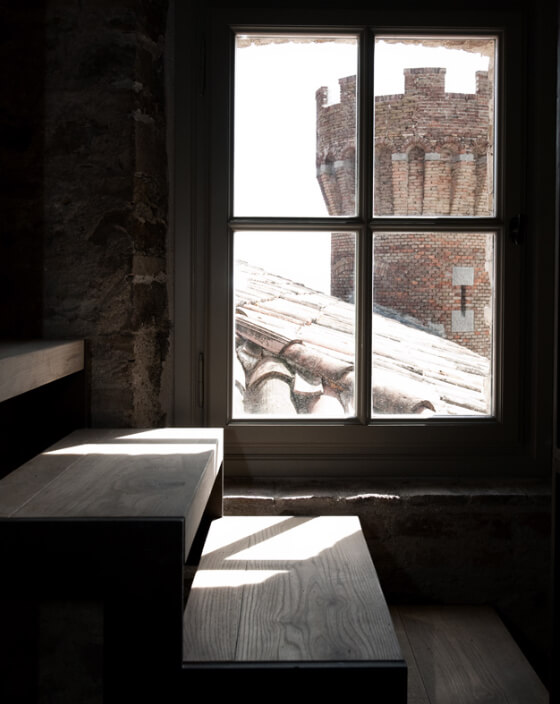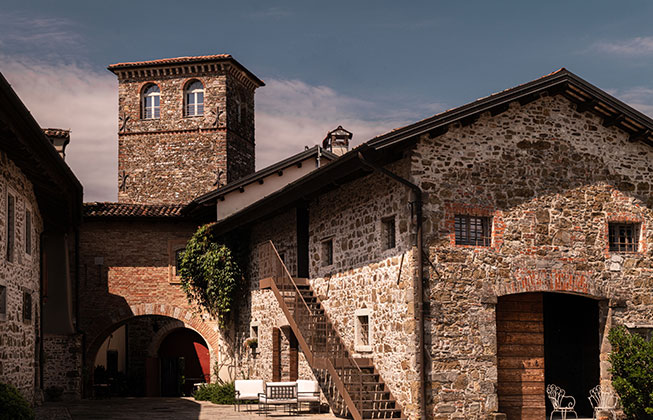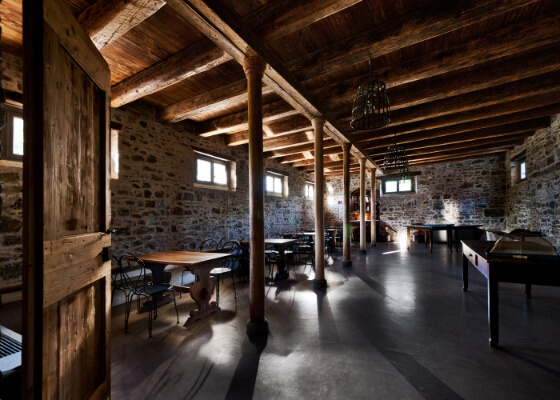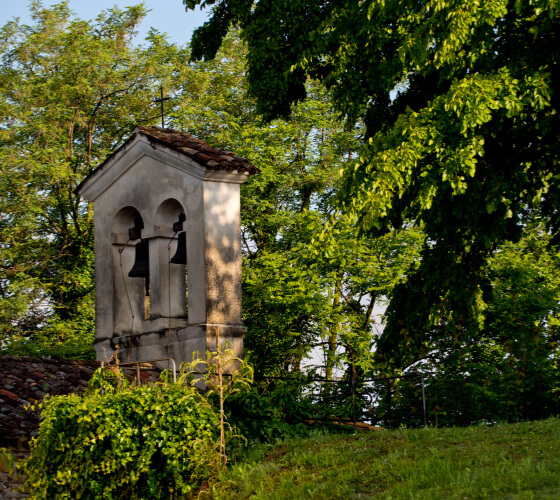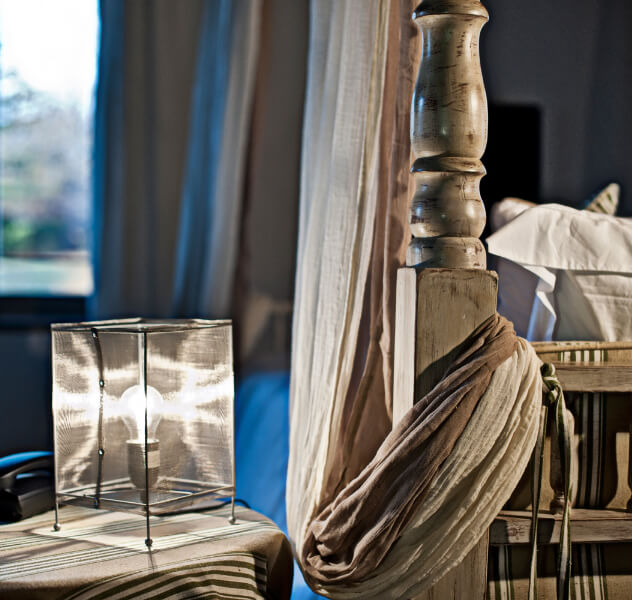A row of large halls for guests of the historic home, for receptions and private events. The stuccos and the two original liberty doors are paired with pastel colors, exquisite fabrics and an imposing boat-shaped Rezzonico Murano chandelier all the way to the Venetian terrace from the early 1900s.
